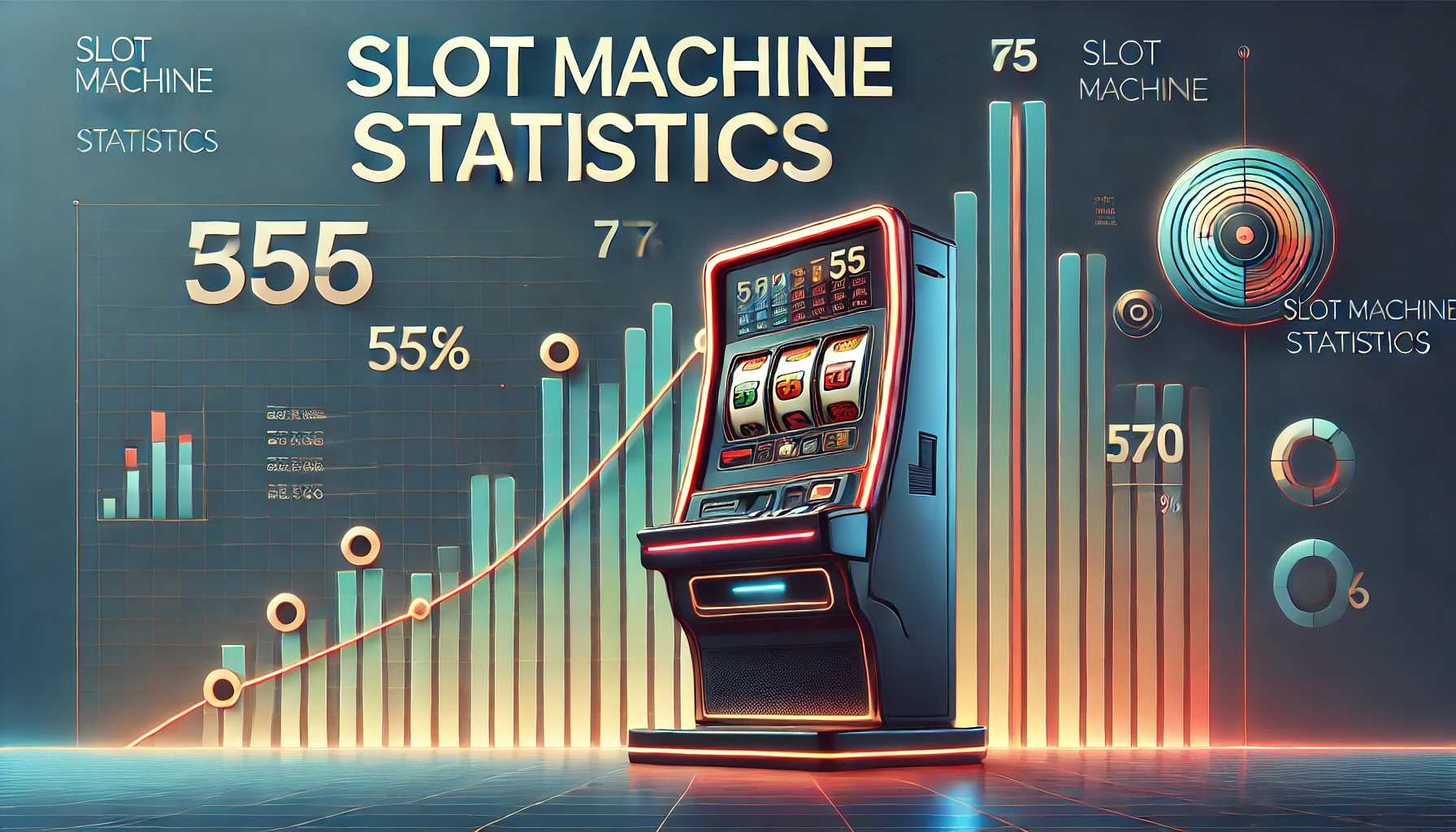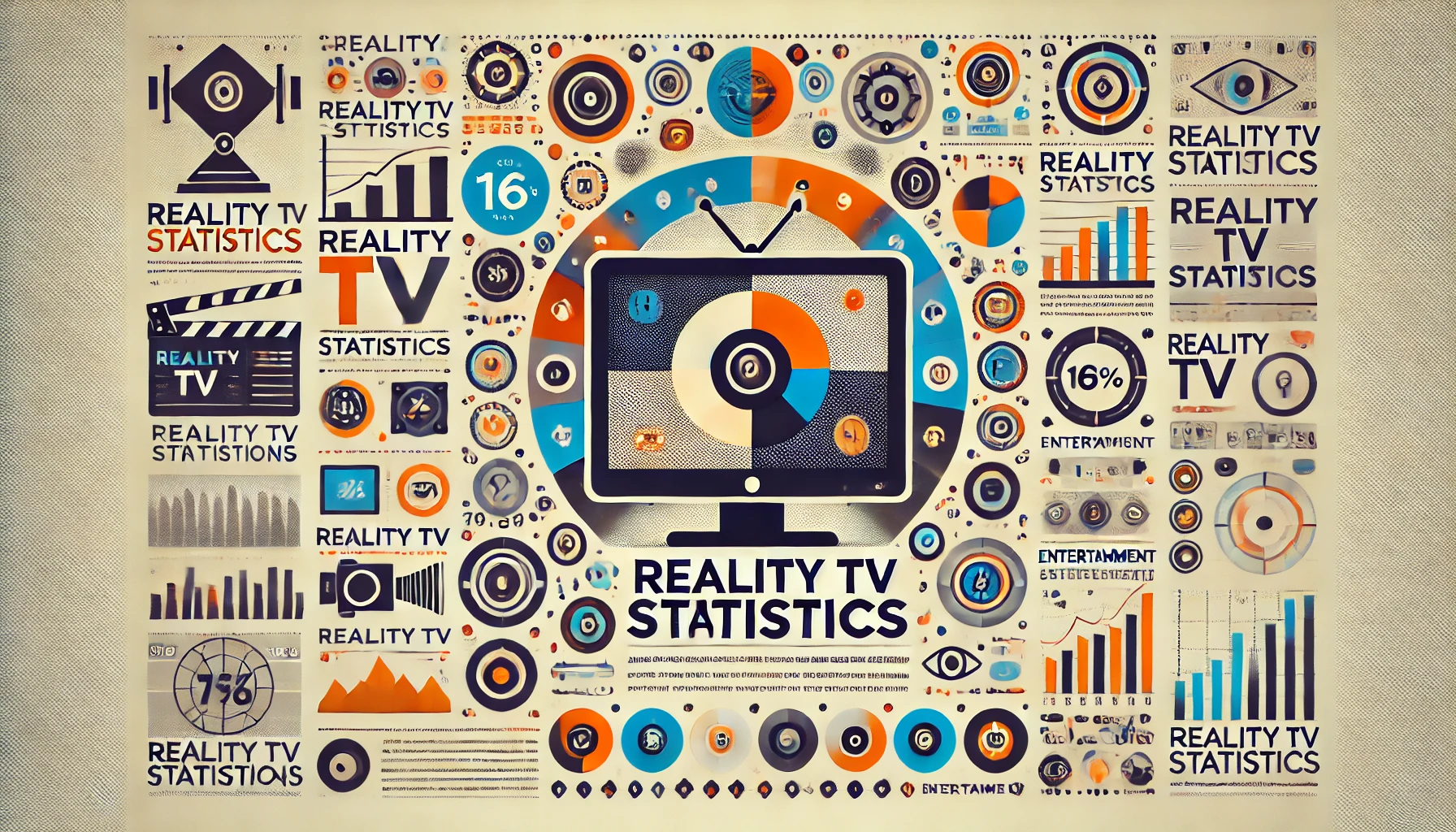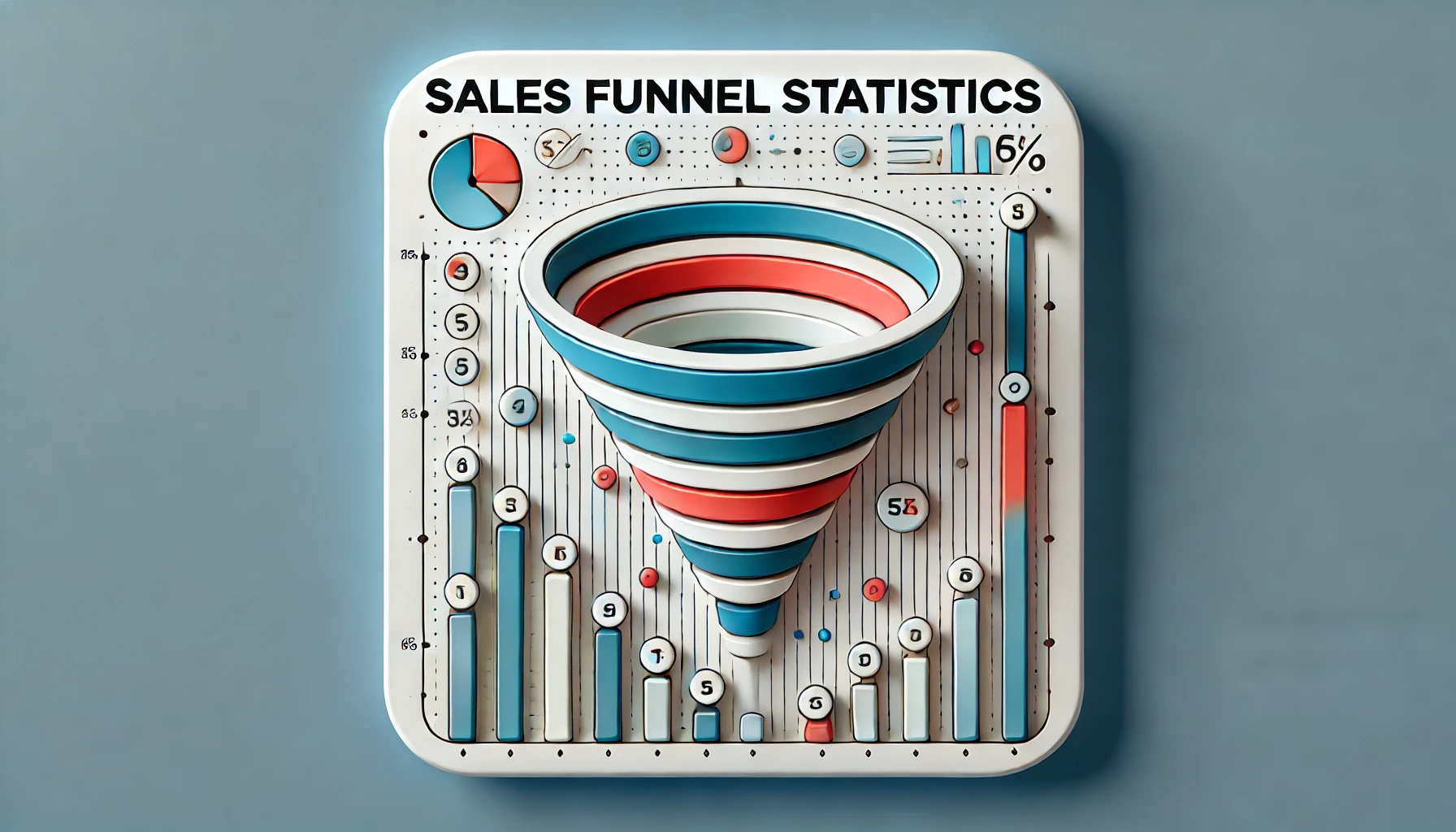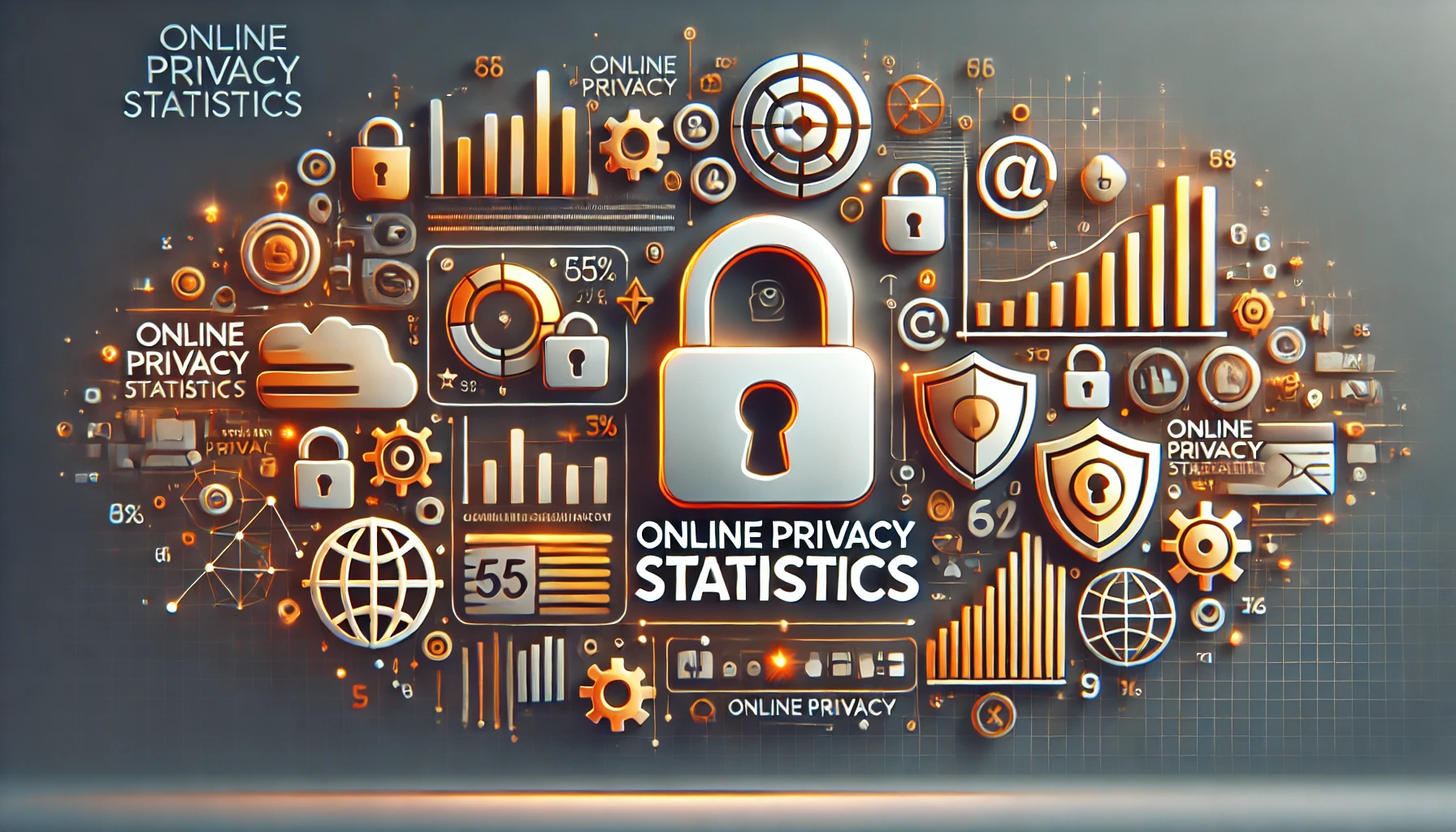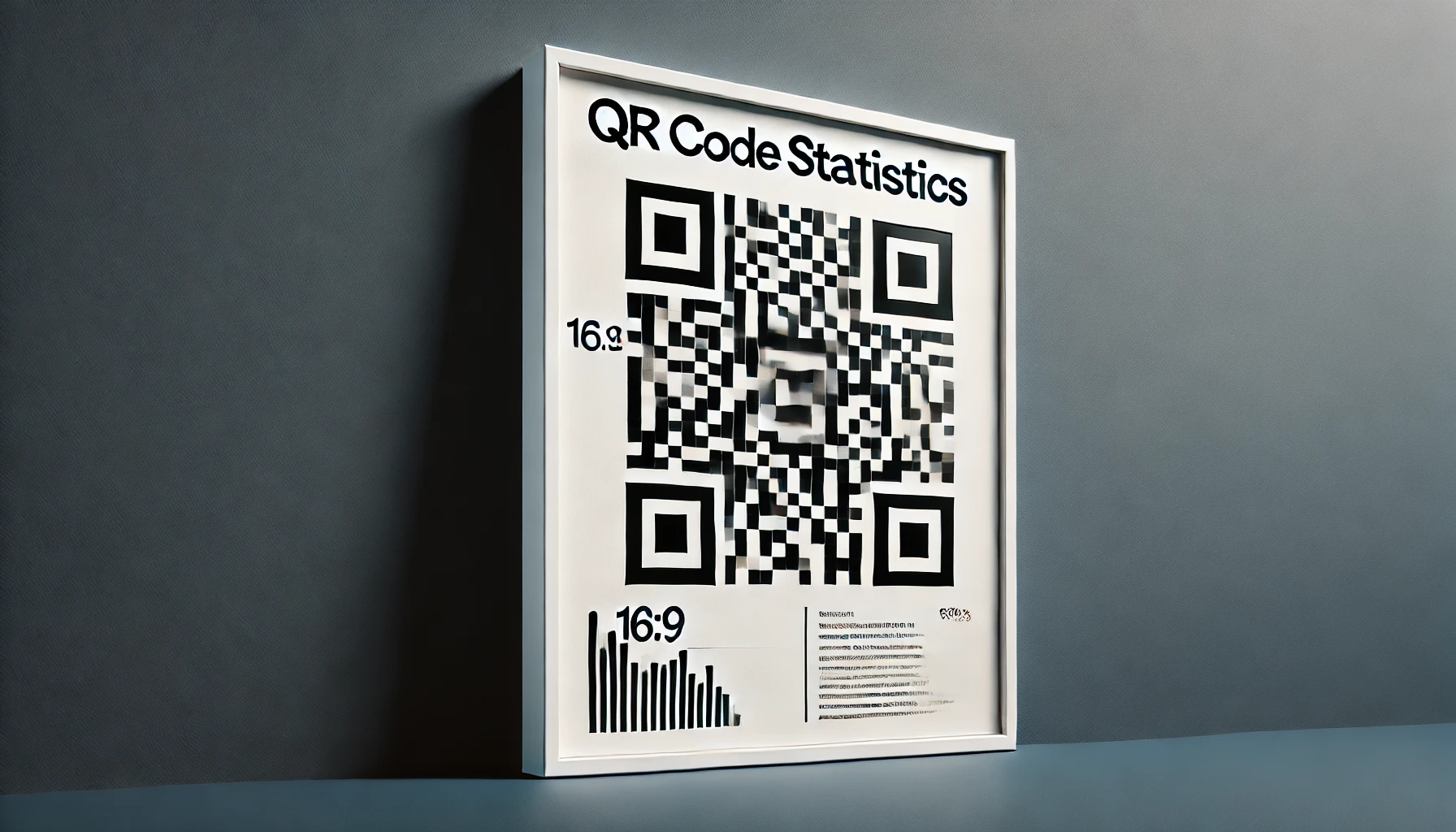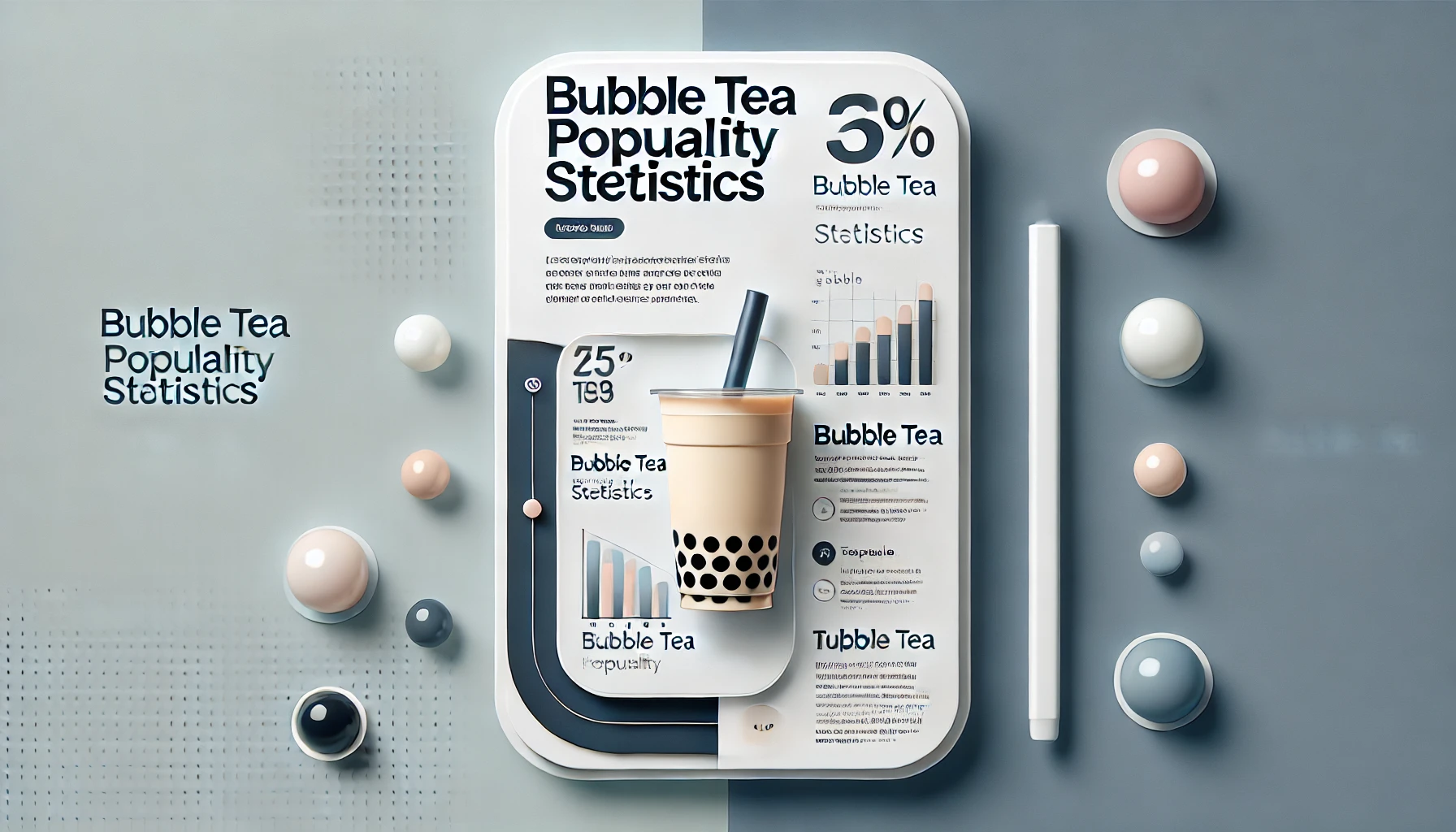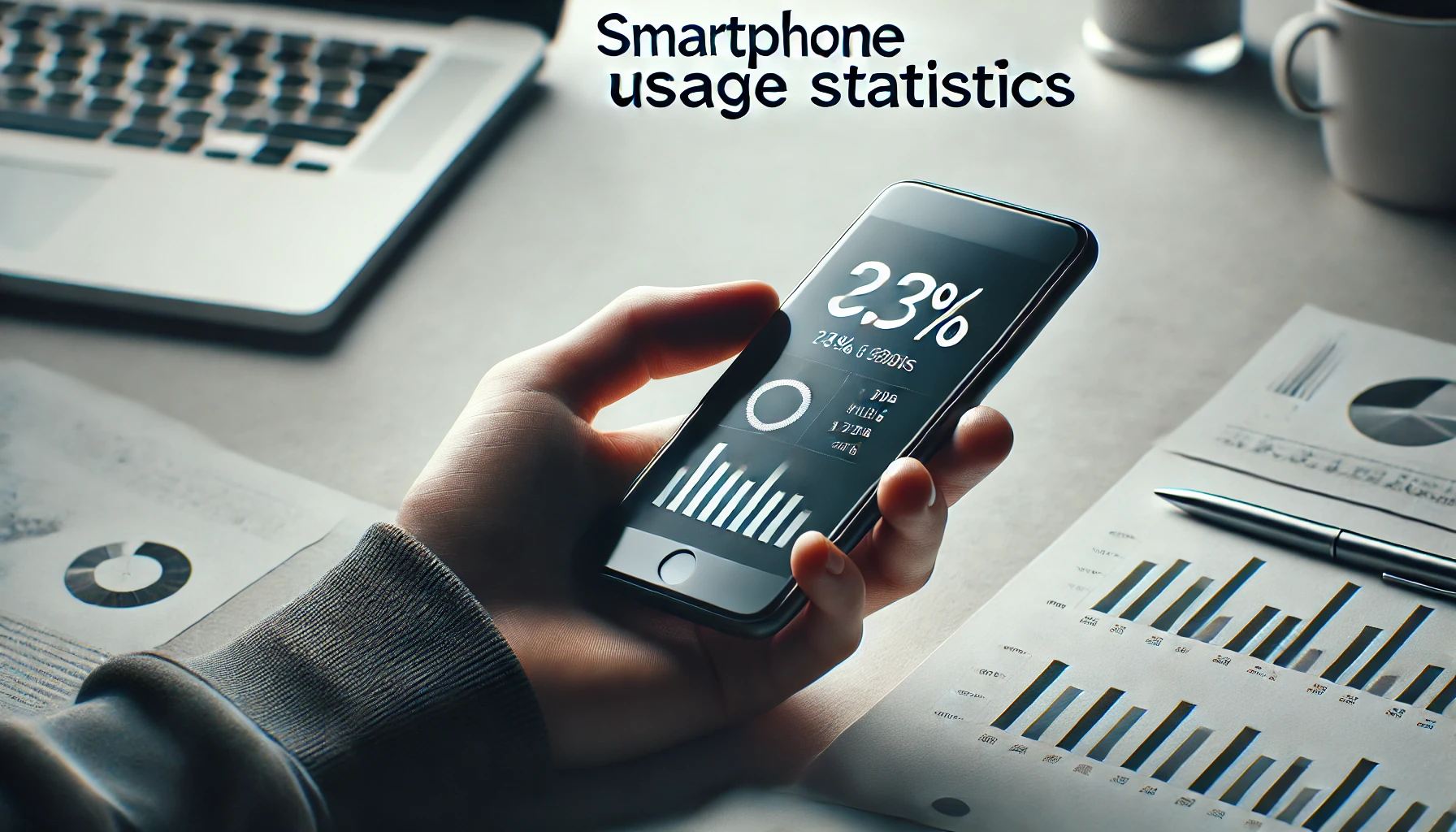Word Of Mouth Statistics By Marketing, Brand Discovery, Impacts, Source And Advertising
Updated · Oct 17, 2024
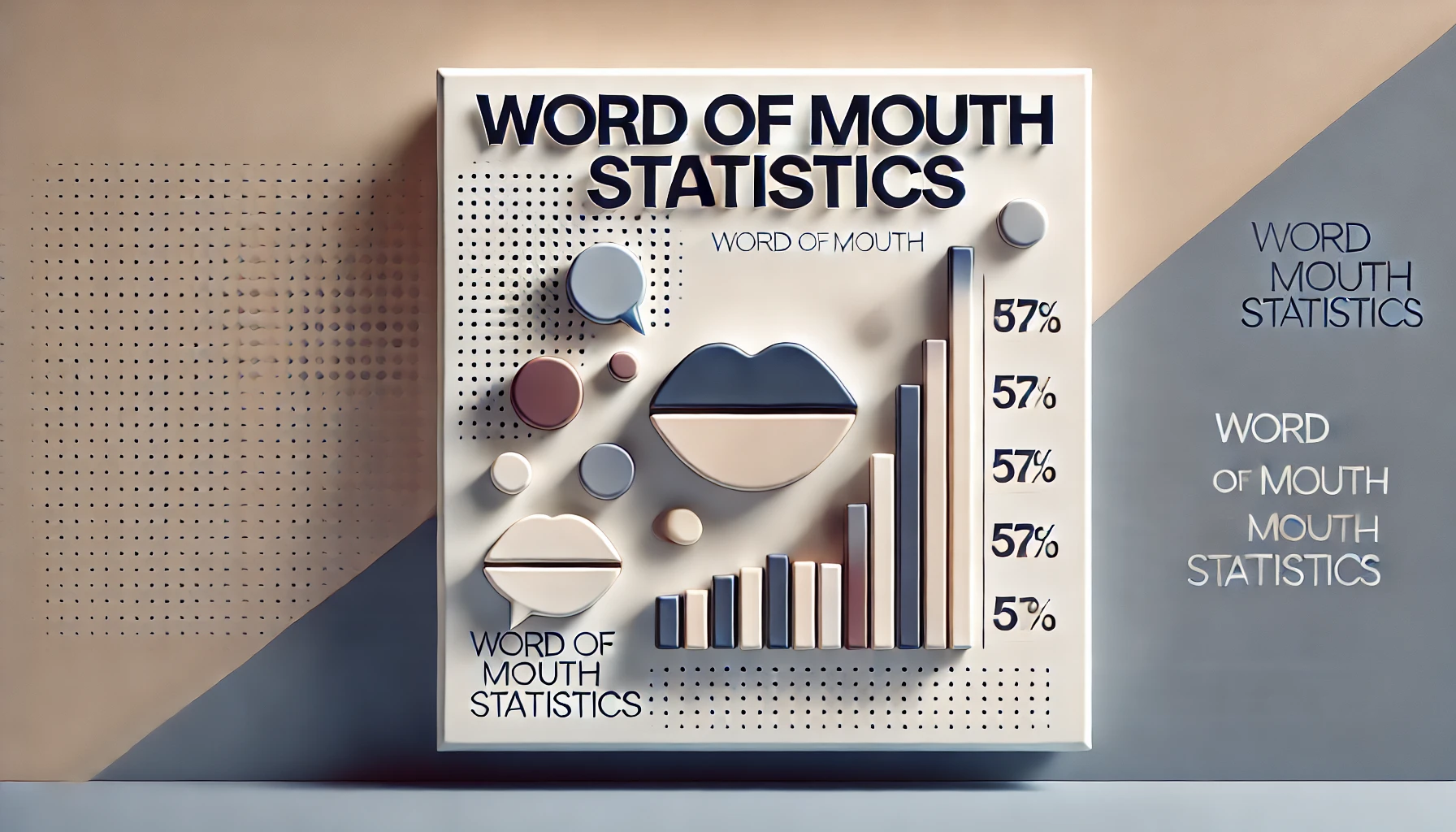
WHAT WE HAVE ON THIS PAGE
- Introduction
- Editor’s Choice
- What is Word-Of-Mouth Marketing?
- General Word Of Mouth Statistics
- Brand Discovery And Consideration Through Word-Of-Mouth Statistics
- Word-of-mouth Marketing And Return On Investment Statistics
- Impact Of Work-Of-Mouth Marketing Statistics
- Word Of Mouth Statistics By Source
- Word-Of-Mouth Statistics For Small Business
- ROI From Word-Of-Mouth Advertising Statistics
- Conclusion
Introduction
Word Of Mouth Statistics: Advertising is everywhere in our daily lives. Social media marketing, personalized ads, public relations, and retargeting influence how we experience products and services. There’s also an interesting field called neuromarketing that combines brain scans with consumer behavior studies.
However, today, we’ll focus on one of the oldest and most effective ways to promote a product—word-of-mouth marketing (WOMM). In Word-of-Mouth Statistics, we’ve clearly shown the huge benefits of this method. That’s why many companies, including some of the biggest, still use this strategy to promote their products and services.
Editor’s Choice
- 83% of shoppers trust recommendations from friends and family. (Nielsen)
- Word-of-Mouth Statistics stated that almost 88% of people trust online reviews from other customers just as much as suggestions from their friends and family.
- 80% of furniture stores believe word-of-mouth is their best marketing method.
- Recommendations from friends make buyers four times more likely to make a purchase.
- People talk about brands casually up to 90 times each week.
- 75% of consumers don’t trust ads and think they can be misleading.
- Roughly 61% of shoppers check search engines for product reviews before buying.
- Word-of-Mouth Statistics stated that around 58% of consumers share their positive experiences about companies on social media and ask friends for their opinions.
- Positive reviews make 91% of people more likely to choose a business.
- On average, a shopper reads ten reviews before trusting a local business.
- 97% of consumers read the business’s responses to reviews.
- Only 53% of people will go to a business that has less than four stars.
- 91% of B2B buyers are influenced by word-of-mouth when making purchase decisions.
- Word-of-mouth marketing boosts marketing effectiveness by 54%.
- 71% of shoppers are more likely to buy when referred by social media.
- Millennials consider word-of-mouth the most important factor in their buying decisions for clothing, packaged goods, financial products, and expensive items.
- Baby boomers view word-of-mouth as most important for financial products and high-priced goods.
- According to Word-of-Mouth Statistics, 85% of website visitors find content created by users more persuasive than brand-produced content like videos and photos.
- 50% of consumers are more likely to join a referral program and recommend a product if they receive a reward or recognition.
- 49% of shoppers rely on recommendations from influencers.
- A 10% increase in word-of-mouth can lead to a 1.5% rise in sales.
- Word-of-mouth results in 5 times more sales than paid advertisements.
- Brands that emotionally connect with their audience receive three times more word-of-mouth than those that don’t.
- 28% of consumers say word-of-mouth is the most important factor in building brand loyalty.
- 64% of marketers believe word-of-mouth is the best marketing strategy for any business.
- 82% of marketers use word-of-mouth marketing to increase brand awareness.
- Word-of-mouth affects 99% of all B2B purchases.
- Word-of-mouth statistics stated that offline word-of-mouth can boost sales by 20%.
What is Word-Of-Mouth Marketing?
Word-of-mouth marketing (WOMM) is as old as buying and selling, yet it remains one of the best strategies for marketers today. It focuses on encouraging people to talk about your product or service naturally, using the positive experiences of satisfied customers to spread the word instead of relying only on advertisements.
Word-of-mouth marketing (WOMM) values honest recommendations more than paid ads. For example, if a friend tells you about a great cafe they found, you’re likely to trust their opinion and want to check it out. That’s the strength of WOMM—recommendations from people we know are more influential than any advertisement, often leading to a loyal group of customers who are excited about your products.
With the Internet and social media, word-of-mouth has gone beyond casual chats. A single online post from a satisfied customer can quickly reach thousands, spreading positive news about your business. However, success with WOMM doesn’t just happen. It begins with offering something worth talking about, like an amazing product, great service, or strong ties to the community.
To make WOMM effective, focus on excellent customer service, build a community around your brand, and keep engaging with your customers to encourage conversations. WOMM doesn’t just happen; it needs a little push. This might mean creating a referral program, asking for reviews, or running campaigns that motivate customers to share their experiences. Regularly interacting with followers on social media also helps keep the excitement alive.
General Word Of Mouth Statistics
- When talking about our favorite products with family and friends, 23% of people do it every day.
- About 78% share their best experiences at least once a week, as per Word-of-Mouth Statistics.
- Additionally, 88% of people are more likely to trust a brand if someone they know recommends it.
- The most popular way to recommend a business is through word-of-mouth (#1), followed by platforms like Facebook, Google, and Twitter.
- Word-of-mouth can be both good and bad. In fact, 21% of people lose trust in a brand because of negative word-of-mouth, even if they haven’t been customers.
- On the positive side, 61% have recommended a local business through word-of-mouth.
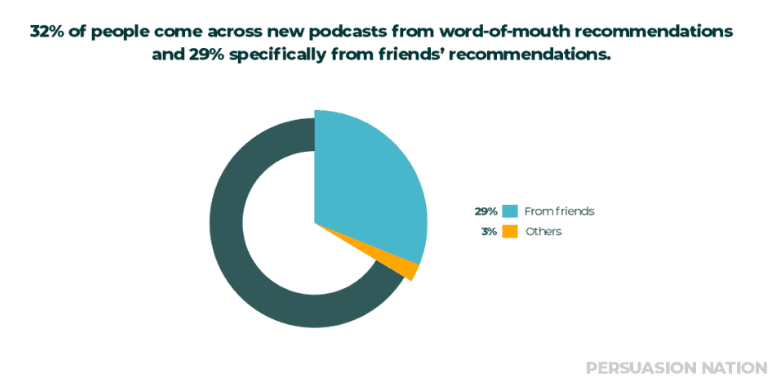 (Source: persuasion-nation.com)
(Source: persuasion-nation.com)
- Consumers talk about specific brands casually around 90 times a week. Plus, 70% trust online reviews from other customers.
- On social media, 58% of users share their positive experiences with companies and ask friends and family for their opinions on brands.
- Brands that create strong emotional connections get three times more word-of-mouth than those that don’t.
- Regarding social media, 43% of users say they bought a product after sharing or liking it on Facebook, Pinterest, or Twitter.
- Word-of-mouth statistics stated that nearly half (49%) rely on influencer recommendations when making buying choices.
- More than half of purchases influenced by social media happen within a week of sharing.
- 80% of purchases from social media sharing occur within three weeks.
- Visual content created by users is seen as more persuasive than brand photos or videos, with 85% of website visitors agreeing.
- About 83% of Americans have made a word-of-mouth recommendation, and 55% do so at least once a month, while 30% make recommendations weekly.
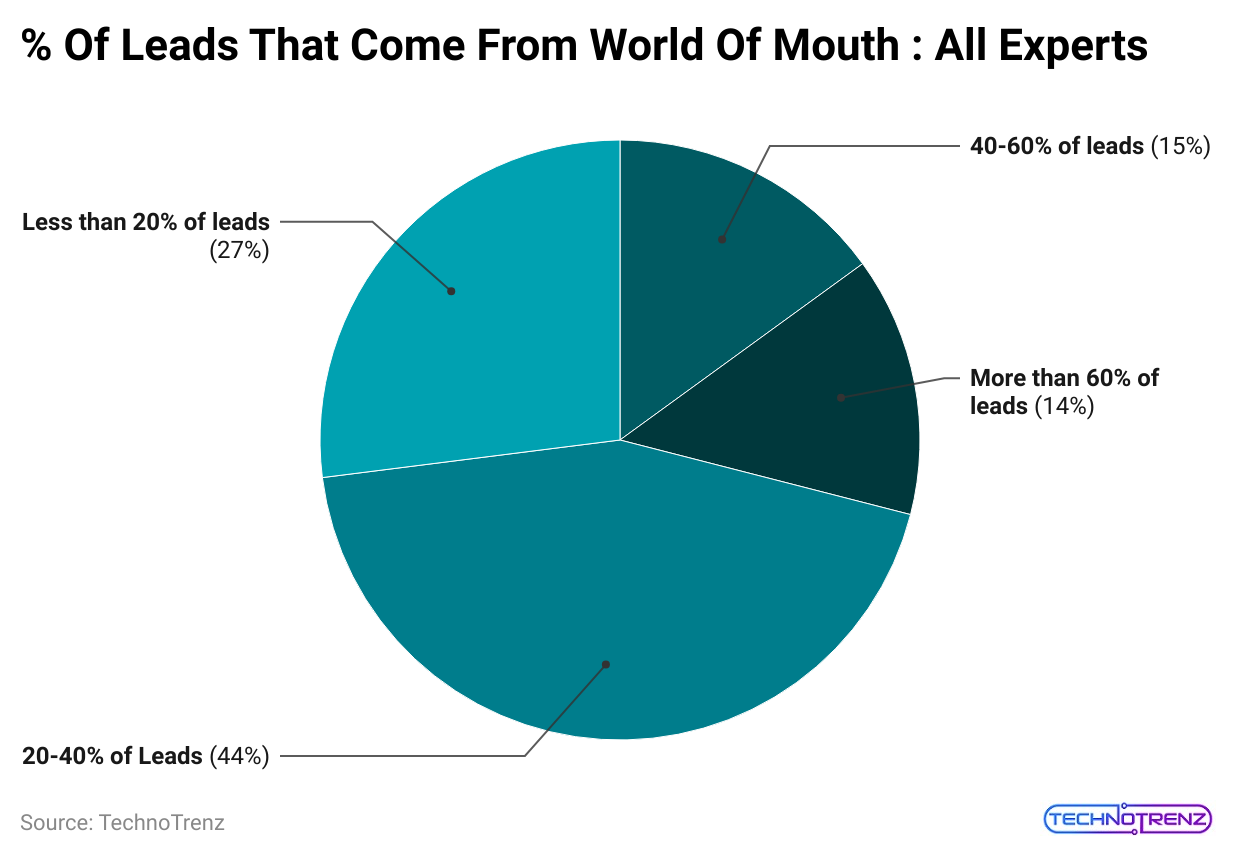 (Reference: shopify.com)
(Reference: shopify.com)
- Most Americans (41%) value recommendations from friends and family more than those from social media.
- Interestingly, 66% trust anonymous online reviews more than suggestions from an ex-boyfriend or ex-girlfriend.
- Also, 61% of consumers look for product reviews online before making a purchase.
- Half of consumers are more likely to recommend a product or join a referral program if they get an incentive or recognition.
- Lastly, 71% of people make recommendations because they had a “great experience,” and 65% of businesses use word-of-mouth recommendations to hire new employees.
Brand Discovery And Consideration Through Word-Of-Mouth Statistics
- Millennials are 38% more likely to learn about new brands from friends and family.
- In Colombia and Mexico, 39% of people first hear about products through word-of-mouth recommendations.
- 32% of people find new podcasts through word-of-mouth, while 29% specifically hear about them from friends.
- Word-of-mouth statistics stated that almost 20% of people discover smartphone apps based on recommendations from others.
- For Amazon Prime Day in 2020, most people learned about it from Amazon’s website, but 17% found out from friends and family.
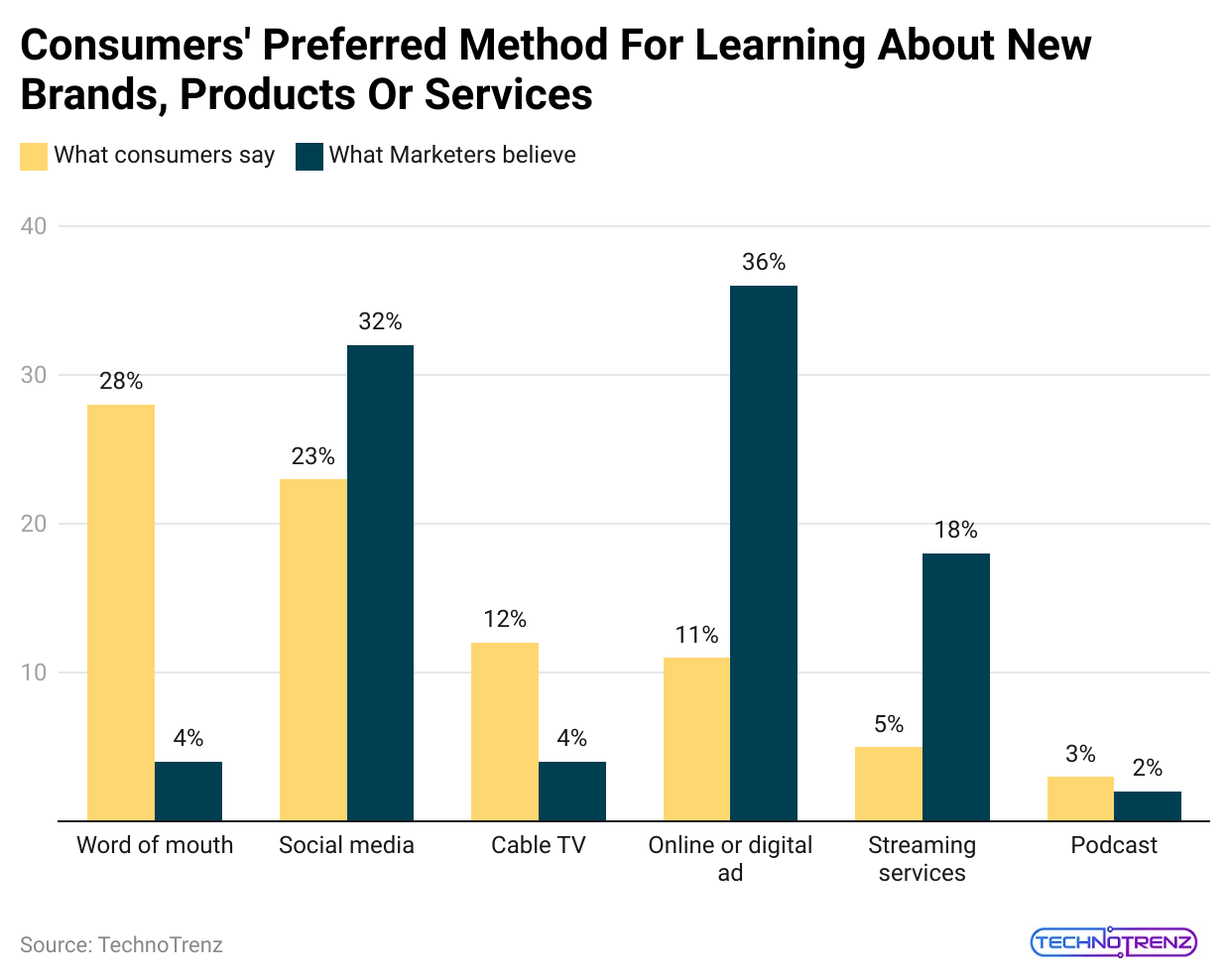 (Reference: wisernotify.com)
(Reference: wisernotify.com)
- In Australia, 42% of people find new brands using search engines and 38% through word-of-mouth.
- In Romania, word-of-mouth is the least popular way to learn about new products, with only 28% using this method.
- For Generation Z, just 12% find out about new products through word-of-mouth.
- In China, 17% of luxury hotel guests say word-of-mouth is a top factor in choosing where to stay.
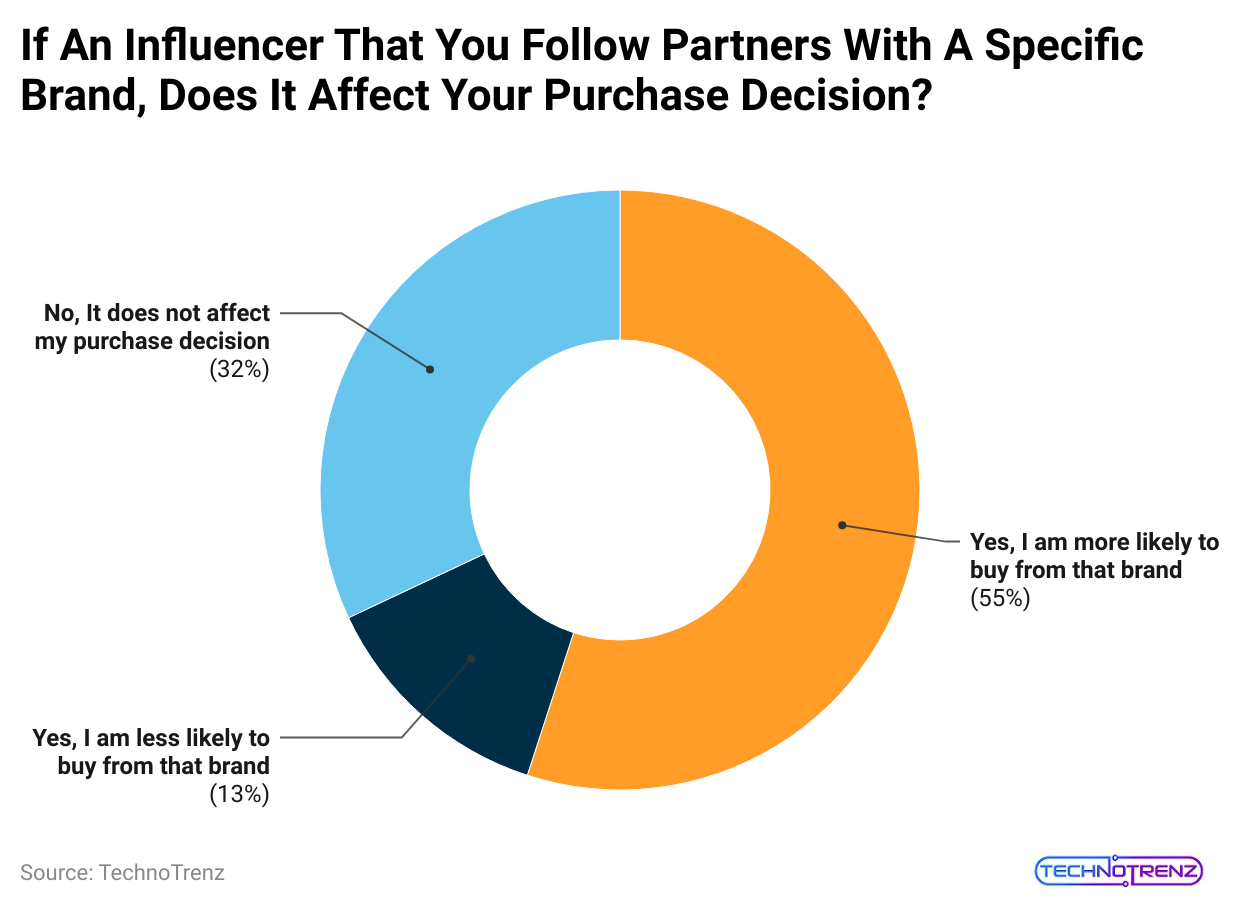 (Reference: wisernotify.com)
(Reference: wisernotify.com)
- Generation X is most likely to find products this way, with 18% doing so regularly.
- In the U.S., 28% of people considered visiting a convenience store after hearing about it from someone they knew in 2019.
- 17% of Canadians say word-of-mouth is the fourth most common reason for considering convenience stores.
- 23% of consumers think about buying Christmas gifts based on recommendations.
- Similarly, 23% of people consider their Valentine’s Day gifts based on what others suggest.
Word-of-mouth Marketing And Return On Investment Statistics
- Nearly 74% of shoppers say word-of-mouth is a major factor in their buying decisions.
- Studies show that a 10% increase in word-of-mouth (both online and offline) can lead to a sales increase of 0.2% to 1.5%.
- Word-of-mouth marketing results in 5 times more sales than paid ads.
- 64% of marketing leaders think word-of-mouth is the best form of marketing.
- Around 70% of respondents plan to spend more on online word-of-mouth marketing, while 29% will increase their offline spending.
 (Reference: wisernotify.com)
(Reference: wisernotify.com)
- Word-of-mouth statistics stated that almost 82% of marketers use word-of-mouth to boost brand awareness, and 43% expect it to increase sales directly.
- It is more effective than paid advertising, generating five times the sales.
- Most marketers (83%) use word-of-mouth marketing because it helps raise brand awareness.
- 43% of marketers use word-of-mouth to increase sales.
- Influencer marketing has an ROI that is 11 times higher than banner ads.
Impact Of Work-Of-Mouth Marketing Statistics
- 91% of B2B buyers are affected by word-of-mouth when choosing what to purchase.
- 74% of shoppers say word-of-mouth is an important factor in their buying decisions.
- Nearly 56% of B2B buyers seek advice from offline word-of-mouth. This increases to 88% when considering online sources.
- Word-of-mouth can enhance marketing effectiveness by up to 54%.
- Studies show that a 10% rise in word-of-mouth (both online and offline) can lead to a sales boost of 0.2% to 1.5%.
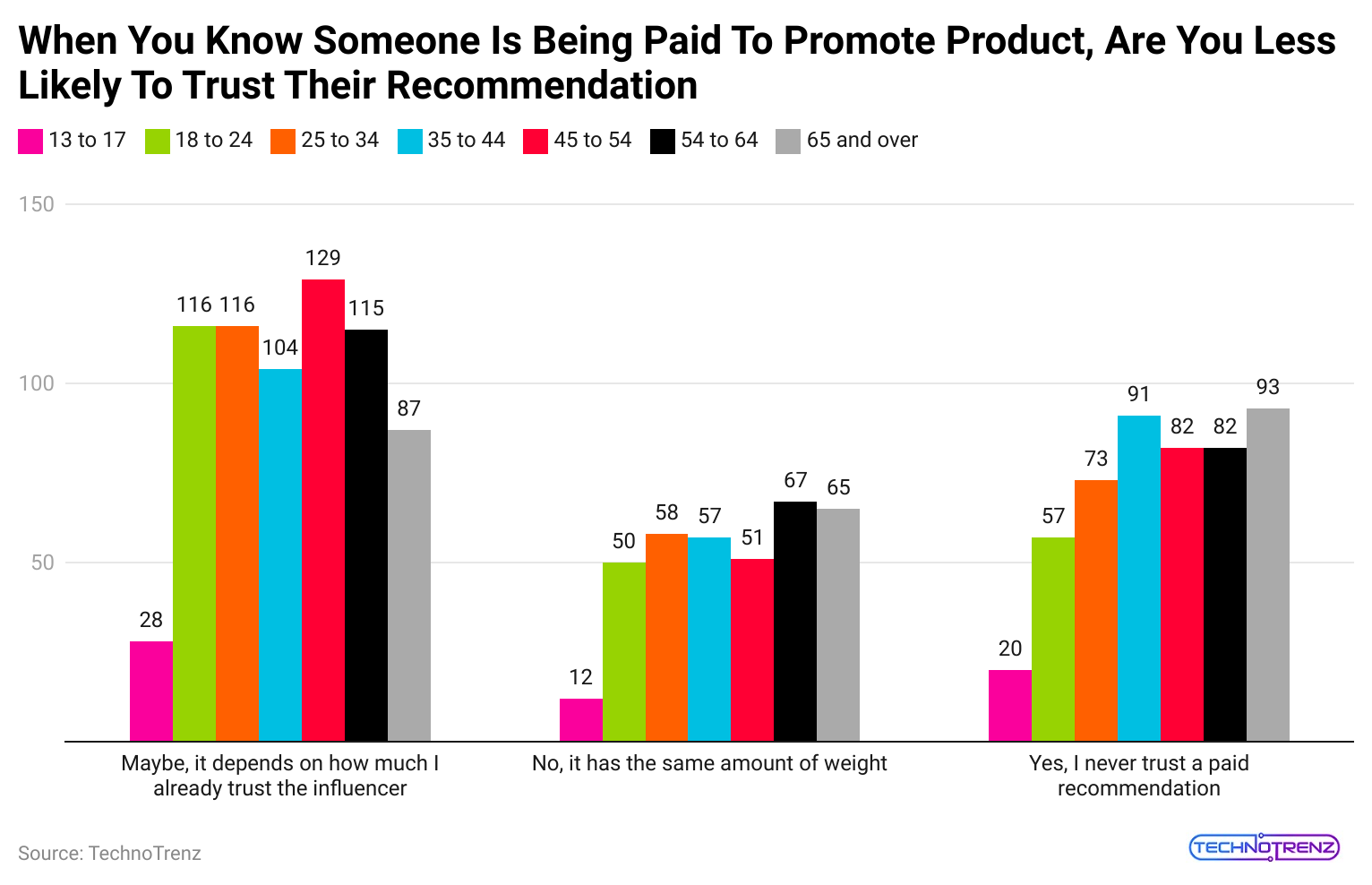 (Reference: coredna.com)
(Reference: coredna.com)
- Word-of-Mouth Statistics stated that almost 84% of consumers say they sometimes or always take action based on personal recommendations.
- Nearly 70% of consumers act on online reviews from others at least sometimes.
- Almost 43% of social media users have purchased a product after sharing or liking it on platforms like Facebook, Twitter, or Pinterest.
- Around 49% of people depend on influencer recommendations when deciding what to buy.
- More than half of purchases influenced by social media happen within a week of sharing, and 80% occur within three weeks.
- 71% of people are more likely to buy when referred by social media.
- Millennials see word-of-mouth as the top influence on their choices for clothes, packaged goods, expensive items (like travel and electronics), and financial products. Baby Boomers also consider it the most influential factor in making big purchases and buying financial products.
- 81% of people are influenced by what their friends post on social media.
- 77% of discussions about brands on social media are from people looking for advice or help.
- 85% of website visitors find user-generated visual content more convincing than brand-created images or videos.
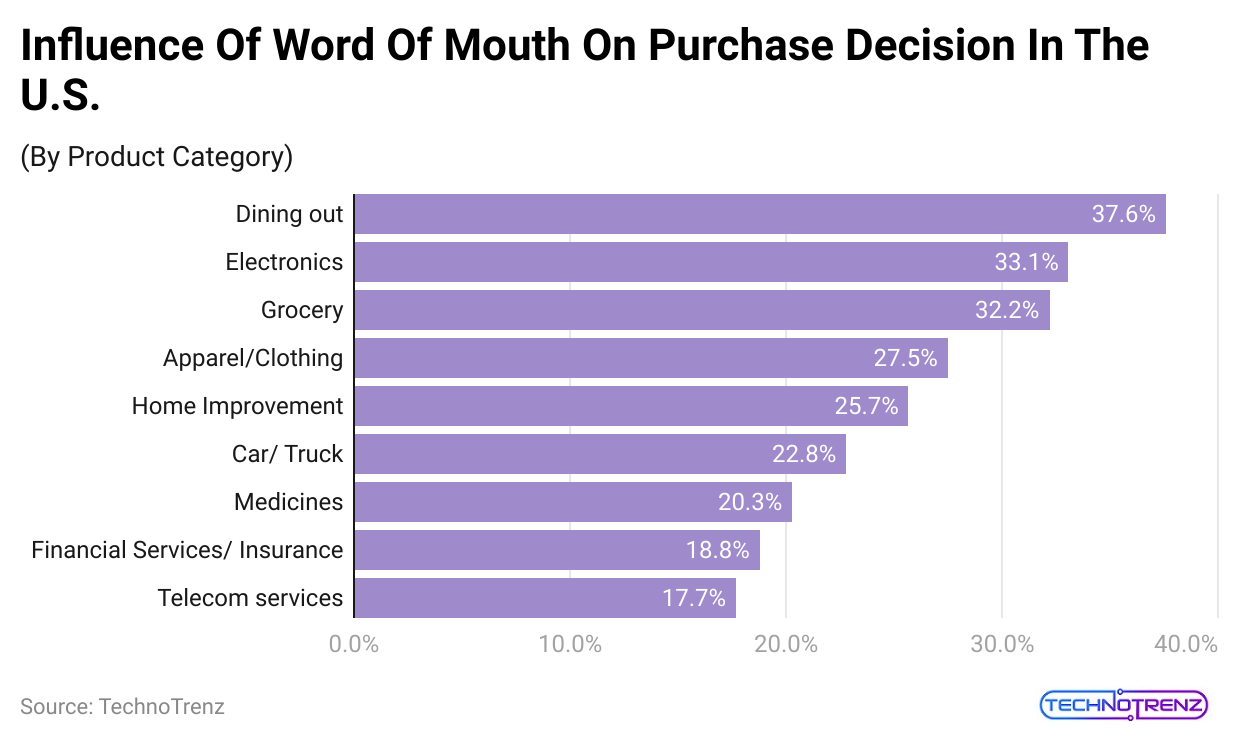 (Reference: enterpriseappstoday.com)
(Reference: enterpriseappstoday.com)
- The top category influenced by word-of-mouth is dining out, making up 37.6%.
- Next are electronics at 33.1% and groceries at 32.2%.
Other important categories include:
#1. Clothing/Apparel: 27.5%
#2. Home Improvement: 25.7%
#3. Cars/Trucks: 22.8%
#4. Medicines: 20.3%
#5. Financial Services/Insurance: 18.8%
#6. Telecom Services: 17.7%
- This version uses straightforward language and maintains the original meaning.
- 70% of marketers plan to spend more on online word-of-mouth marketing, while 29% will increase their offline spending.
- 82% of brands use word-of-mouth marketing to raise brand awareness, but 43% expect it to boost direct sales.
- Referrals from friends make consumers four times more likely to make a purchase.
Word Of Mouth Statistics By Source
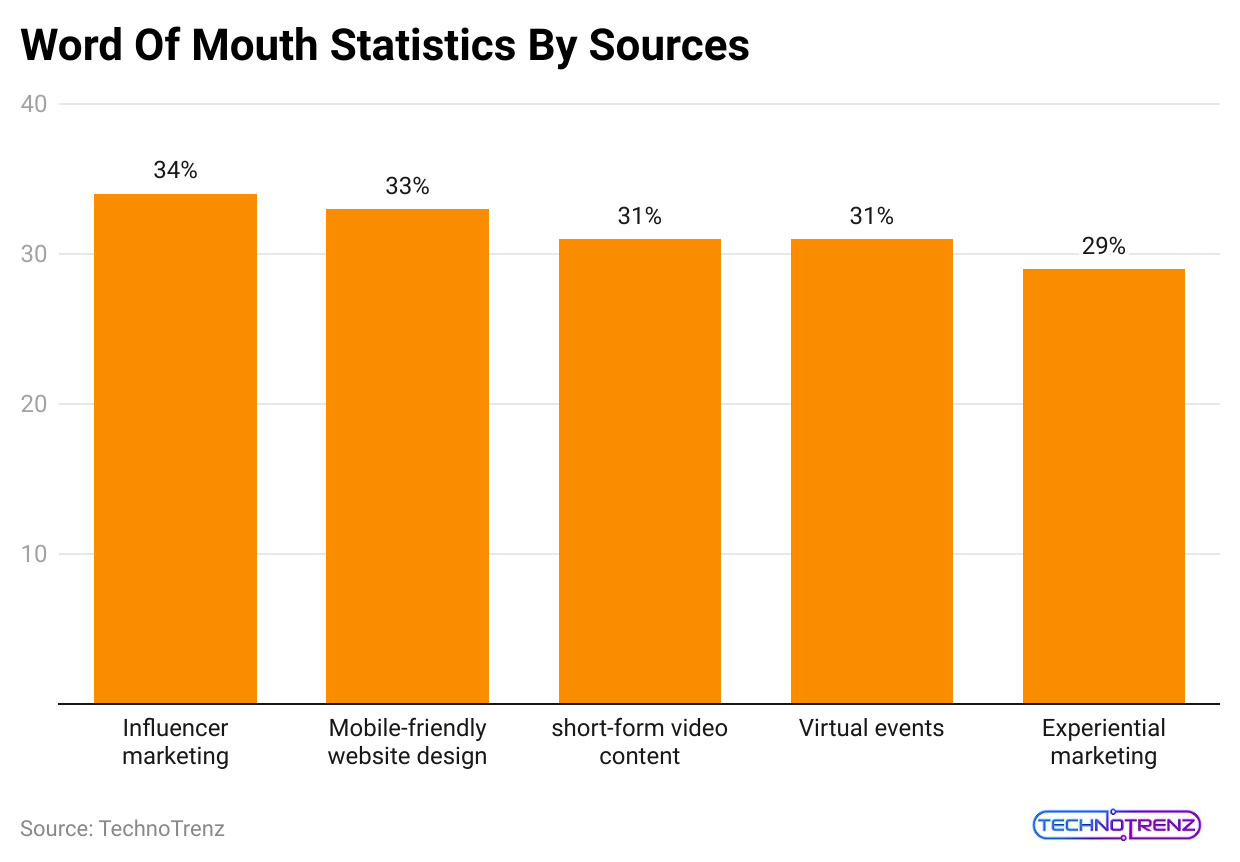 (Reference: enterpriseappstoday.com)
(Reference: enterpriseappstoday.com)
- Influencer marketing is the most commonly used source for word-of-mouth advertising, making up 34%.
- Other important sources include mobile-friendly website design at 33% and experiential marketing at 29%.
- Short-form videos and virtual events also contribute, each adding 31% to word-of-mouth marketing strategies.
Word-Of-Mouth Statistics For Small Business
- Most businesses learn about new artificial intelligence technologies through coworkers, networking, and watching other companies use them.
- Only 8% of B2B marketers think word-of-mouth marketing is effective for promoting live events.
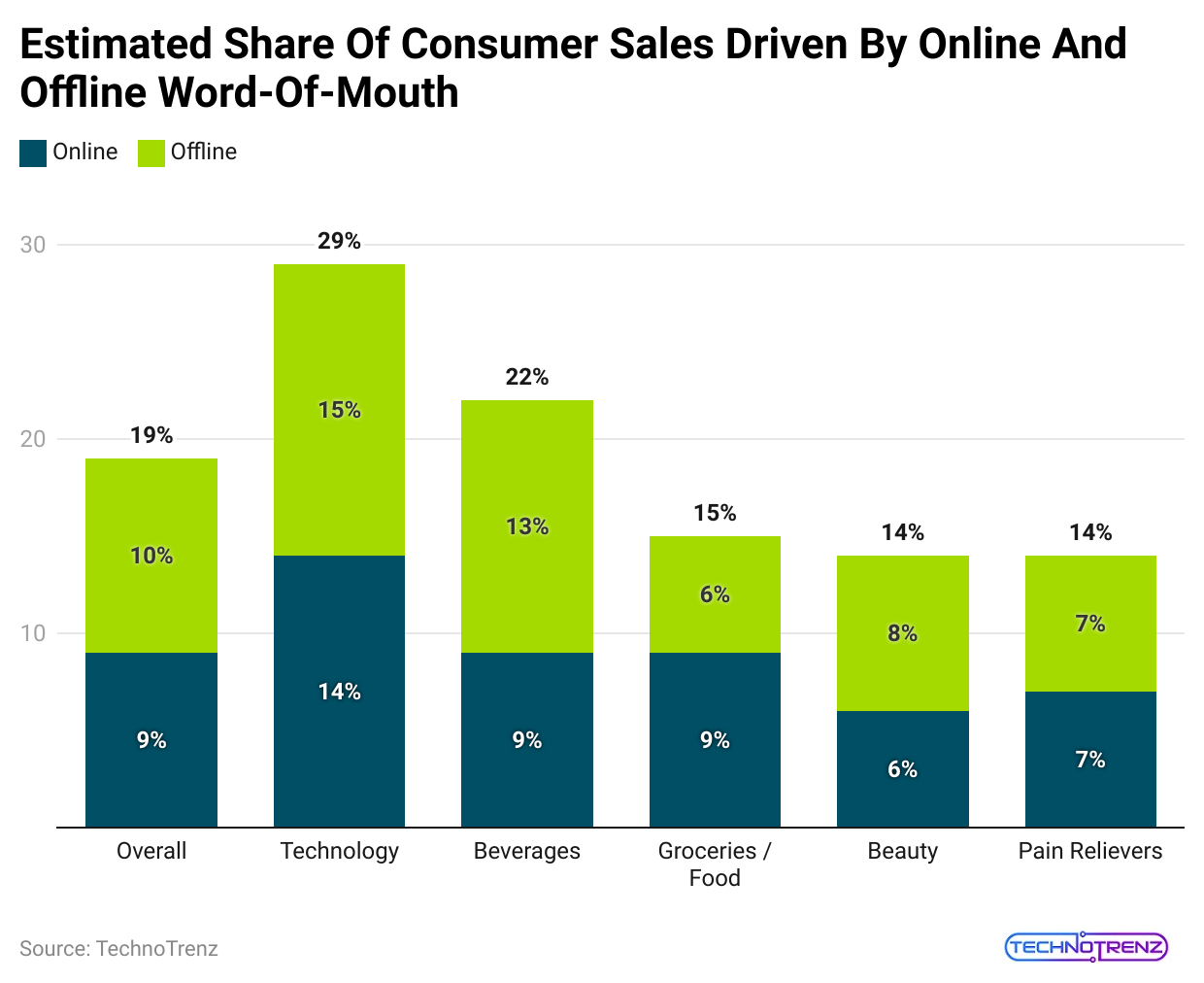 (Reference: saastr.com)
(Reference: saastr.com)
- Word-of-mouth is one of the main ways small businesses drive traffic through affiliate marketing, as per Word-of-Mouth Statistics.
- 20% of businesses plan to use word-of-mouth marketing in their yearly marketing strategies.
- 65% of companies rely on word-of-mouth recommendations when hiring for open positions.
- Word-of-mouth can be a strong marketing tool for small businesses. For instance, a mosquito fumigation service reported that 76% of their clients come from word-of-mouth referrals.
- When buying business software, 46% of small businesses choose based on suggestions from colleagues and other companies in the industry.
- In the U.S., 48% of businesses consider word-of-mouth marketing to be one of their best marketing strategies.
ROI From Word-Of-Mouth Advertising Statistics
- 74% of buyers consider word-of-mouth a major influence on their purchasing choices.
- Research shows that a 10% increase in word-of-mouth (both online and offline) can lead to a sales rise of 0.2% to 1.5%.
- Word-of-mouth marketing generates five times more sales than paid ads.
- Word-of-Mouth Statistics stated that almost 64% of marketing leaders think word-of-mouth is the most effective marketing strategy.
- 70% of people plan to increase their budget for online word-of-mouth marketing, while 29% will boost their budget for offline word-of-mouth marketing.
- Nearly 82% of marketers use word-of-mouth to raise brand awareness, and 43% expect it to improve direct sales.
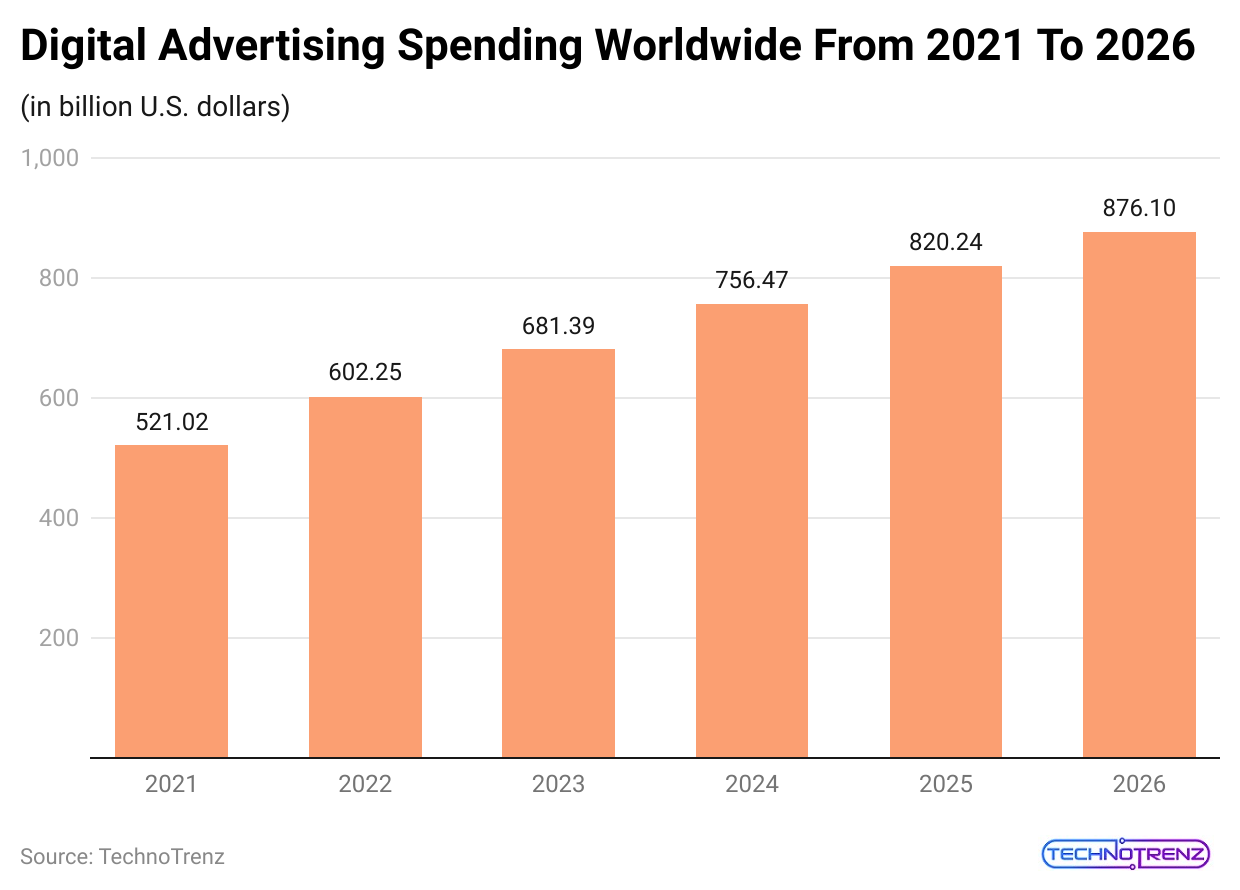 (Reference: sender.net)
(Reference: sender.net)
- Word-of-mouth drives $6 trillion in yearly global spending and makes up 13% of all purchases.
- Word-of-mouth is more influential than paid advertising, leading to five times more sales.
- 64% of marketers say word-of-mouth is the best marketing method.
- Most marketers (83%) use word-of-mouth marketing because it helps with brand recognition.
- 43% of marketers rely on word-of-mouth advertising to boost sales.
- Word-of-mouth marketing brings in 5 times more sales than paid ads.
- The return on investment for influencer marketing is 11 times higher than for banner ads.
Conclusion
Word of mouth is really important for boosting your brand’s trust and reputation. Although it’s not a new concept, it’s essential to know that people are more likely to believe their friends’ opinions and experiences with your brand instead of what the business claims. When someone you know says something is the “best,” it feels more genuine than the business saying it is.
This is why many businesses are focusing on creating ways for word-of-mouth to happen. Therefore, through this article, we have shed enough light on Word-of-Mouth Statistics.
FAQ.
Different sources say that 70% to 85% of jobs are filled through networking or referrals from people. This means that many jobs in the U.S. should be advertised on job boards. However, finding jobs that are publicly listed is easier than figuring out how to apply for these word-of-mouth jobs.
Viral marketing is a sales method that uses word-of-mouth to spread news quickly about a product or service. The growth of the Internet and social media has significantly increased the number of viral messages, which often appear as memes, shares, likes, and forwards.
The Word of Mouth Marketing Association (WOMMA) says that the top word-of-mouth marketing strategies should be honest, trustworthy, social, measurable, and respectful. Word-of-mouth marketing uses various methods, such as generating buzz, writing blogs, and engaging on social media.
Organic word-of-mouth marketing happens naturally when customers discuss your brand, service, or product on their own. This can take place online, over the phone, or in person. Examples include reviews, ratings, comments on social media, or friendly conversations while waiting in line.

Saisuman is a professional content writer specializing in health, law, and space-related articles. Her experience includes designing featured articles for websites and newsletters, as well as conducting detailed research for medical professionals and researchers. Passionate about languages since childhood, Saisuman can read, write, and speak in five different languages. Her love for languages and reading inspired her to pursue a career in writing. Saisuman holds a Master's in Business Administration with a focus on Human Resources and has worked in a Human Resources firm for a year. She was previously associated with a French international company. In addition to writing, Saisuman enjoys traveling and singing classical songs in her leisure time.


